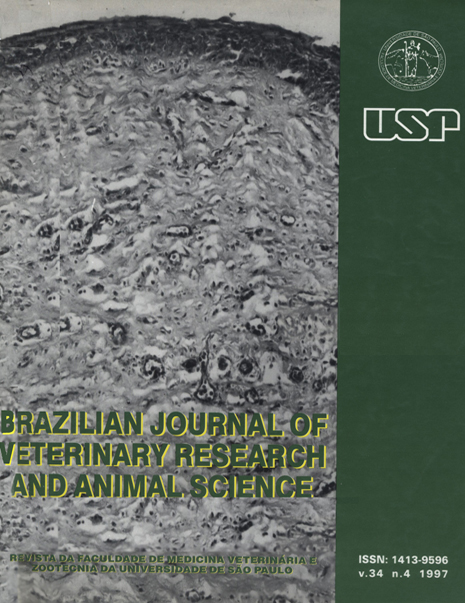Comparative study between the effects of gelatin-resorcin-formaldehyde (Colagel®) and n-butil-2-cianoacrilate (Histoacryl®) in rabbit cervical esophagotony
DOI:
https://doi.org/10.11606/issn.2318-3659.v34i4p218-224Keywords:
Adhesives, Cyanoacrylate, Rabbits, Hsophagoplasty, Gelalin-Resorcin and formaldehydeAbstract
The objetive of the study was to test two types of adhesives, Colager and HistoacryP in the impermeabilization of the suture line, by comparing them to classic esophagotomy, because of the anatomic peculiarity of the esophagous in relation to dehiscence, mostly in humans.The experiment was conducted in 12 rabbits, and the clinic, macroscopic and microscopic patterns of the wounds were observed in three different times, which are related to distinct phases of the healing process.The results show an intense infiltrate of polymorphonuclear cells (mainly eosinophils) in animals in which it was utilized the Colager, compared to controls and to the animals in which it was used the Histoacryl®. Based on these results it was infered that the healing process was delayed in injuries in which Colager was applied.Downloads
Download data is not yet available.
Downloads
Published
1997-08-01
Issue
Section
ANIMAL PATHOLOGY
License
The journal content is authorized under the Creative Commons BY-NC-SA license (summary of the license: https://
How to Cite
1.
Ferrigno CRA, Laus JL, Bechara GH, Stopiglia AJ. Comparative study between the effects of gelatin-resorcin-formaldehyde (Colagel®) and n-butil-2-cianoacrilate (Histoacryl®) in rabbit cervical esophagotony. Braz. J. Vet. Res. Anim. Sci. [Internet]. 1997 Aug. 1 [cited 2026 Jan. 9];34(4):218-24. Available from: https://revistas.usp.br/bjvras/article/view/50297





